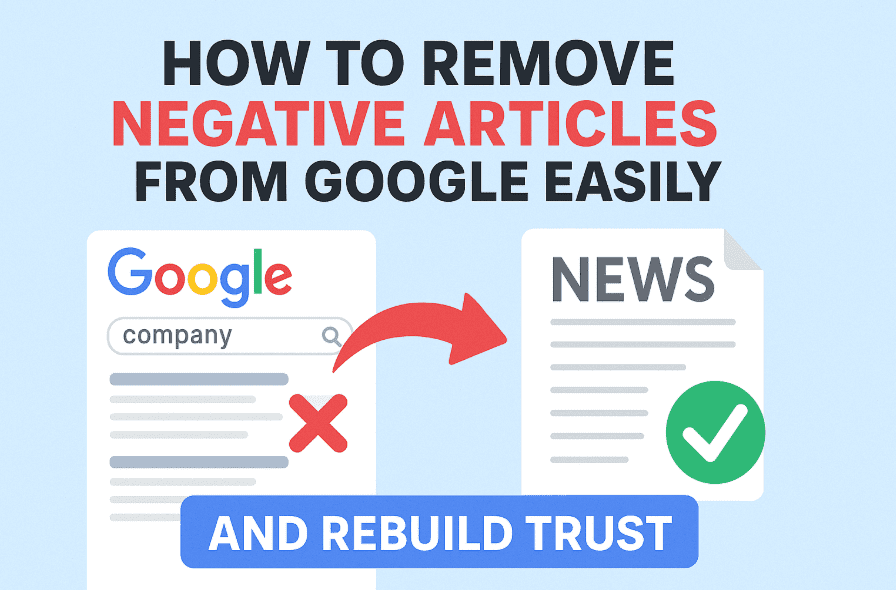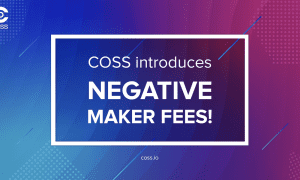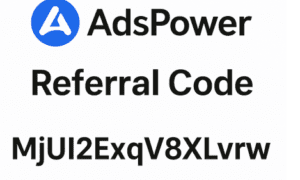Search your company name on Google and see an old scandal staring back? It happens more often than you’d think. One bad headline can stick around for years, shaping how people see you long after the real story has moved on. If that’s where you are, it’s time to learn how to remove negative articles from Google and rebuild a fair picture of your brand.
This isn’t about hiding mistakes. It’s about balance – making sure your work, achievements and present actions aren’t buried under outdated or unfair noise.
1. Why You Should Remove Negative Articles from Google
People rarely go past the first page of Google results. So, if a negative article appears there, it’s what they’ll remember. That single link can quietly block deals, job offers or partnerships.
The reason such stories stay visible is simple: no one challenges them. They keep getting clicks, backlinks and social shares. If you want them gone, you have to act through smart SEO and, when necessary, negative content removal requests.
Identify the Negative Article Impact
Start with a reality check. Google your brand exactly as customers would. List which stories appear, how old they are, and which keywords bring them up. Sometimes it’s not the article itself but the search phrase that keeps it alive.
Check for Legal or Policy Breaches
If something crosses the line – false claims, personal data, defamation – take the legal route. Platforms and courts exist to protect you from that kind of harm.
2. Legal and Platform Steps for Negative Content Removal
You can’t erase everything online, but there are doors you can knock on.
Defamation and Negative Article Removal
If someone publishes lies that hurt your business, a lawyer can file a takedown request or demand correction. It takes time, but truth often wins.
Privacy and Negative Content Removal
When private details like addresses or ID numbers are posted, report them. Google’s own removal form covers these cases. It’s an ethical way to handle negative content removal without censoring opinions.
Community Rules for Negative Content Suppression
Every major platform has guidelines. If a post breaks them – hate speech, harassment, explicit material – flag it clearly. Provide evidence and stay factual. Emotion rarely helps; precision does.
3. SEO-Based Negative Content Suppression
If you can’t delete it, outrank it. That’s what negative content suppression means. Google rewards fresh, high-quality, and credible pages. So make sure yours fit that bill.
Target Keywords Linked to Negative Articles
Look for the exact phrases tied to the bad press. If the keyword is “your company review scandal,” write an honest piece about how you improved customer service. Same keyword, better story.
Build Backlinks for Negative Article Suppression
Reach out to partners, industry blogs or journalists. Earn backlinks the right way – through real collaborations, not spammy link swaps. Search engines notice authenticity.
Refresh Evergreen Content for Reputation Recovery
Update old pages with new data or case studies. When Google sees you maintaining useful material, it rewards you with higher rankings. That’s how older, negative pages start sliding down.
4. Expanding Positive Coverage and Trust Signals
Suppression isn’t enough; you need new wins that fill search results with better stories.
Publish Press Releases and Positive Articles
Write about launches, milestones, or community projects. Submit them to credible outlets. Every published piece adds weight against the old coverage and builds organic negative content suppression.
Engage on Owned and Social Channels
Keep your social pages and blog alive. Share updates, short videos, customer stories, even lessons learned. Google loves active brands because users do too.
Showcase Reviews and Client Testimonials
Ask happy clients for honest feedback. A handful of thoughtful reviews can shift perception faster than hundreds of anonymous comments. Real voices beat rumors every time – and they help with steady negative article removal.
5. When to Seek Professional Help for Negative Article Removal
There’s a point where DIY stops working. If months go by and those results don’t move, hire experts. Reputable reputation management firms know how to remove negative articles from Google safely and within search policies.
Avoid shortcuts like fake reviews or paid backlinks – they’ll only worsen things. Real repair is slower but permanent.
If you want expert help, visit Fameninja’s Remove Negative Articles service for professional reputation repair.
Monitor and Maintain Reputation Rankings
After improvement, keep watch. Use Google Alerts, track rankings monthly, and respond quickly if new problems appear. Consistency protects progress.
6. Common Mistakes in Negative Content Suppression
- Reacting emotionally online
- Posting piles of low-quality articles hoping they’ll hide the bad ones
- Ignoring transparency when a clear apology would help
- Using tricks that violate Google’s rules
Honest, steady work beats any quick fix.
Conclusion
Your reputation online is not fixed in stone. With the right mix of honesty, strategy and patience, you can remove negative articles from Google and replace them with a story that truly reflects who you are today. Keep creating genuine content, engage openly with your audience, and maintain that progress month after month. Over time, people – and Google – will see the version of your brand that deserves to be on page one.
If you want expert help with this process, you can learn more about professional solutions for removing negative articles and long-term online reputation management.

































